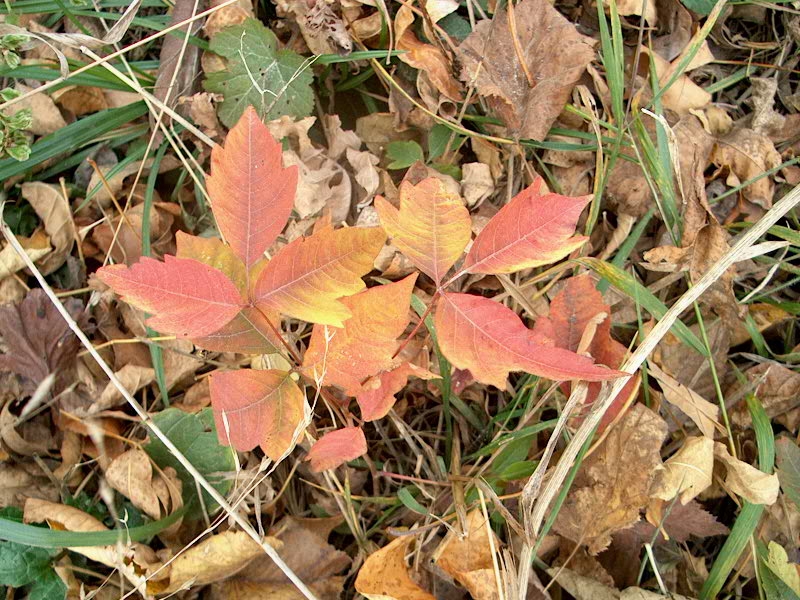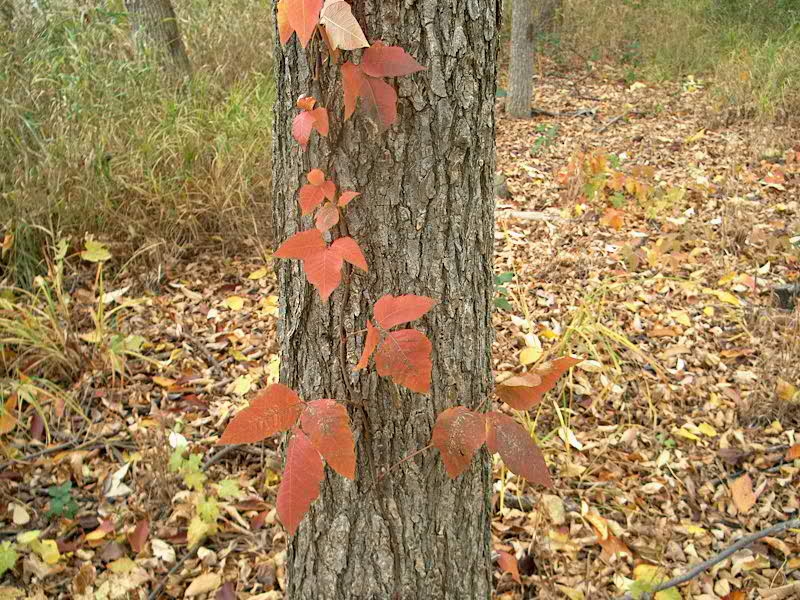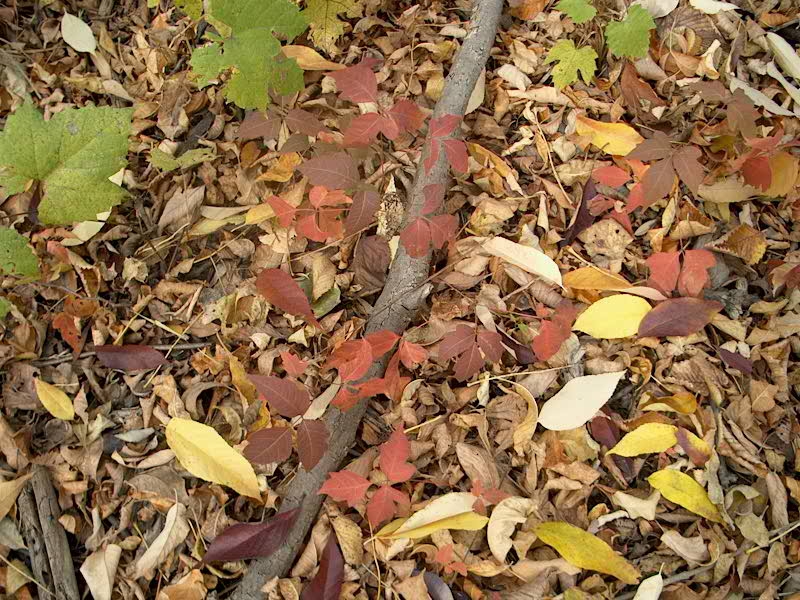Trees are not the only plants whose leaves change color and drop in the fall. Poison ivy is gorgeous this time of year!
Yes, there is poison ivy growing at the Chicago Botanic Garden. It can be seen growing as a vine on the tree in this picture.
Contrary to popular opinion, it is not a “wicked plant”; it is part of the habitat. The chemical in poison ivy that causes us misery, urushiol, does not bother other animals. In fact, deer eat the leaves and many animals eat the small whitish berries that appear in late fall and winter.
Poison ivy leaves vary a little from plant to plant, but once you get to know the basic shape it is unmistakable. First notice the characteristic three leaflets that remind us “Don’t Touch Me!”
Now look at how the top leaflet is symmetrical and attached to the main stem by a short, thinner stem called a petiole.
The lower leaflets have thumb-like lobes that point away from the top leaf. These leaves attach to the stem at their base.
Can you find the poison ivy in this picture?
If you identified the red leaves as poison ivy, then you are ready to hike a trail at the Garden this month and enjoy the color!
We make every effort to remove poison ivy from edges of trails so fear not! Stay on the paths, learn to recognize it, and you have nothing to worry about. See if you can spot (but not touch!) some poison ivy along the way.



